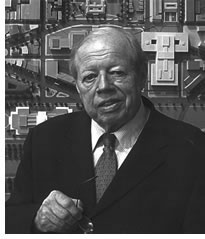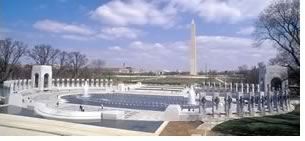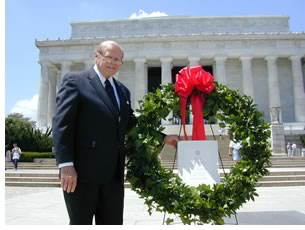

12/2005
 The
profession of architecture lost a good friend and true champion when
Charles H. Atherton, FAIA, longtime secretary of the U.S. Commission
of Fine Arts and 2005 recipient of the AIA Thomas Jefferson Award for
public service, died December 3 as a result of injuries sustained when
he was hit while crossing Connecticut Avenue near his home in his beloved
Washington, D.C. He was 73 years old.
The
profession of architecture lost a good friend and true champion when
Charles H. Atherton, FAIA, longtime secretary of the U.S. Commission
of Fine Arts and 2005 recipient of the AIA Thomas Jefferson Award for
public service, died December 3 as a result of injuries sustained when
he was hit while crossing Connecticut Avenue near his home in his beloved
Washington, D.C. He was 73 years old.
“His exceptional stewardship as secretary of the Commission is without equal in its profound influences on the nation’s capital,” wrote Jefferson Award nominator Harry G. Robinson III, FAIA, dean emeritus and professor of urban design at Howard University and former chair of the U. S. Commission of Fine Arts. “A scholar on the development of the city, he brought reason and thoughtfulness to decisions affecting its memorials; changes in its landscape, structure, and patterns; and to its built interventions.”
A lifetime of service
Atherton devoted his 44-year-long commission career to carrying forth
its mission as an independent agency to advise the federal and District
of Columbia governments on matters of art and architecture that affect
the appearance of the nation’s capital. Among the projects on
which he worked were the FDR Memorial, Lafayette Square directly opposite
the White House, and the WWII Memorial, which was 10 years in the making.
Atherton retired on May 24, 2004, the day the WWII Memorial was dedicated.
 To travel through the city with him was a study in how it came to its
present form and who deserved the credit—or, occasionally, blame.
He was quick to reminisce on decisions major and minor through debate
with presidents, senators, curators, and citizens groups that shaped
and expanded the Capital Mall and White House surround. “His passing
leaves a sudden and profound vacuum in the collective knowledge of the
history of this city,” lamented former AIA Archivist Tony Wrenn,
Hon. AIA.
To travel through the city with him was a study in how it came to its
present form and who deserved the credit—or, occasionally, blame.
He was quick to reminisce on decisions major and minor through debate
with presidents, senators, curators, and citizens groups that shaped
and expanded the Capital Mall and White House surround. “His passing
leaves a sudden and profound vacuum in the collective knowledge of the
history of this city,” lamented former AIA Archivist Tony Wrenn,
Hon. AIA.
“Atherton’s influence in major decisions of design in Washington is enormous. Freedom Plaza, the preservation of the Willard Hotel, the Georgetown Waterfront, extension of the West Front of the Capitol—to name only a few—exhibit his lasting legacy and love for our nation’s capital,” said the Jefferson Award jury. “His receipt of this award expresses not only his love of our nation’s capital, but his enduring affection for preservation and sustainability.”
 Strong traditions
Strong traditions
“Ever since the AIA moved its national headquarters to Washington
in 1899, its members have shared an obligation to its host city. That obligation
has encompassed formation and support of the Commission of Fine Arts to
oversee the development of the city’s monumental core,” explained
AIA Executive Vice President/CEO Norman L. Koonce, FAIA. “Charles
Atherton was a fitting steward of that mission, seeing it into the 21st
century.”
“It's hard to imagine the planning of Washington without him being on the scene,” Thomas Luebke, the current secretary of the commission, told the Washington Post. “His leaving is going to be difficult for lots of people. . . . He single-handedly has been involved more than anybody in the public process that has created the city we know today.”
Atherton is survived by two sons and a daughter. His funeral was held December 8 at the Washington National Cathedral. AIA President Douglas L Steidl, FAIA, said of Atherton: “He personified the importance of the citizen-architect being engaged in protecting the ideals of our society. Working always with a certain panache, wit, and passion, he was a role model for our profession.”
Copyright 2005 The American Institute of Architects.
All rights reserved. Home Page ![]()
![]()
 |
||
|
||